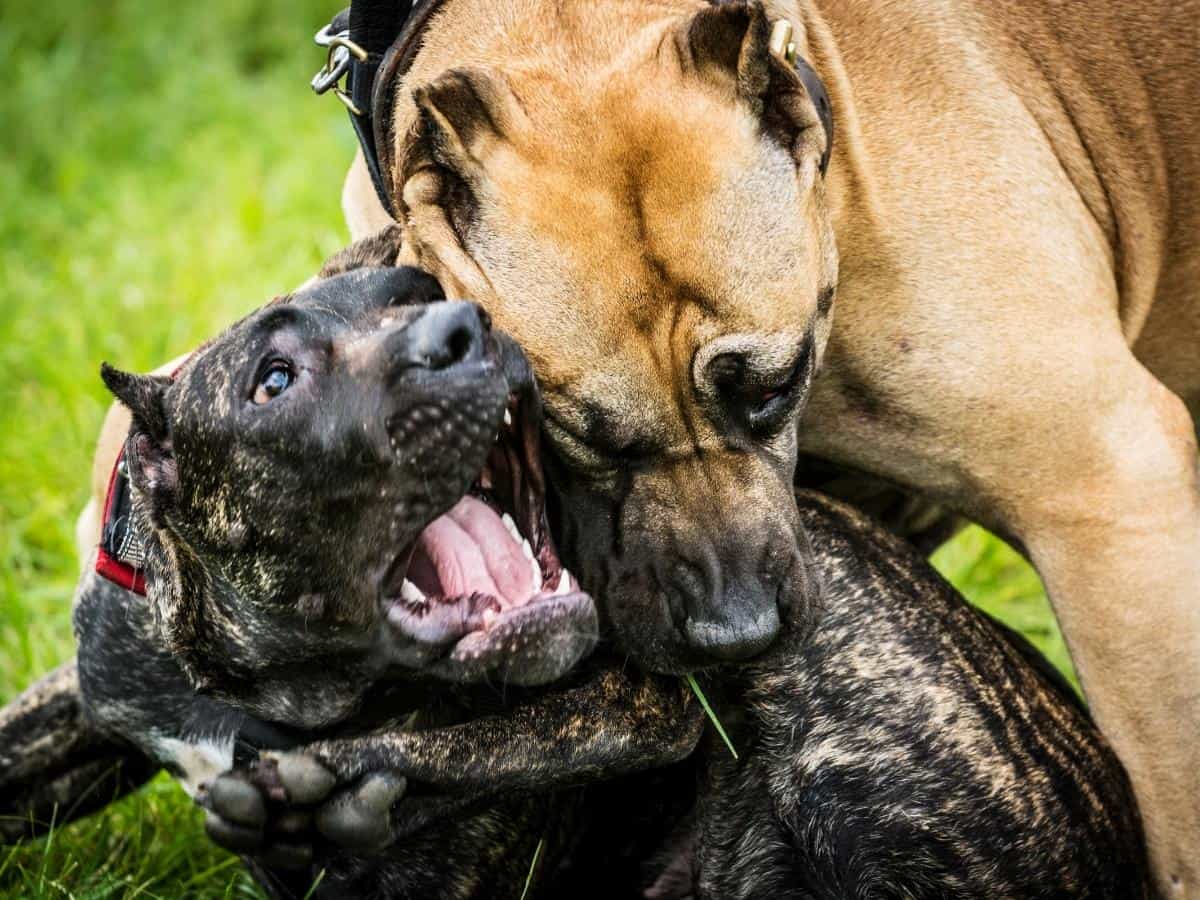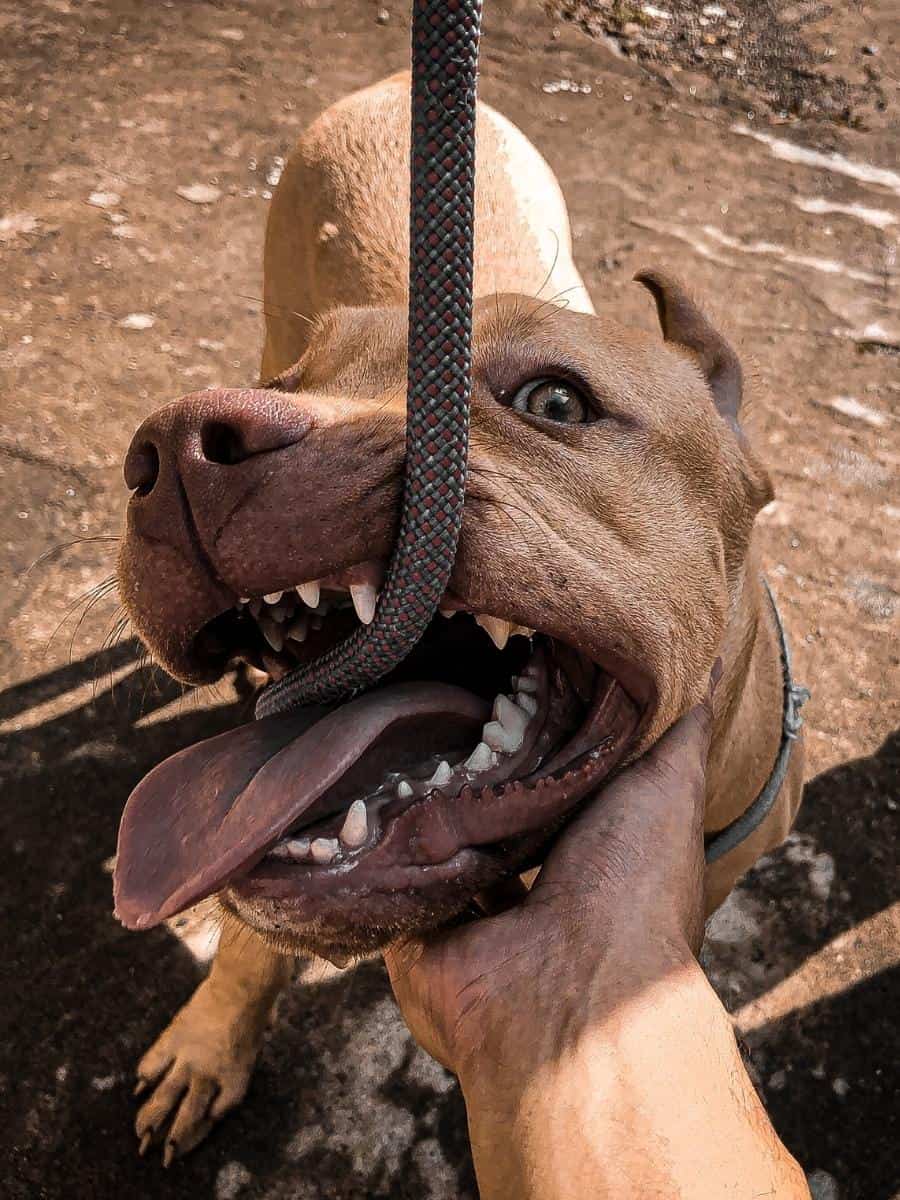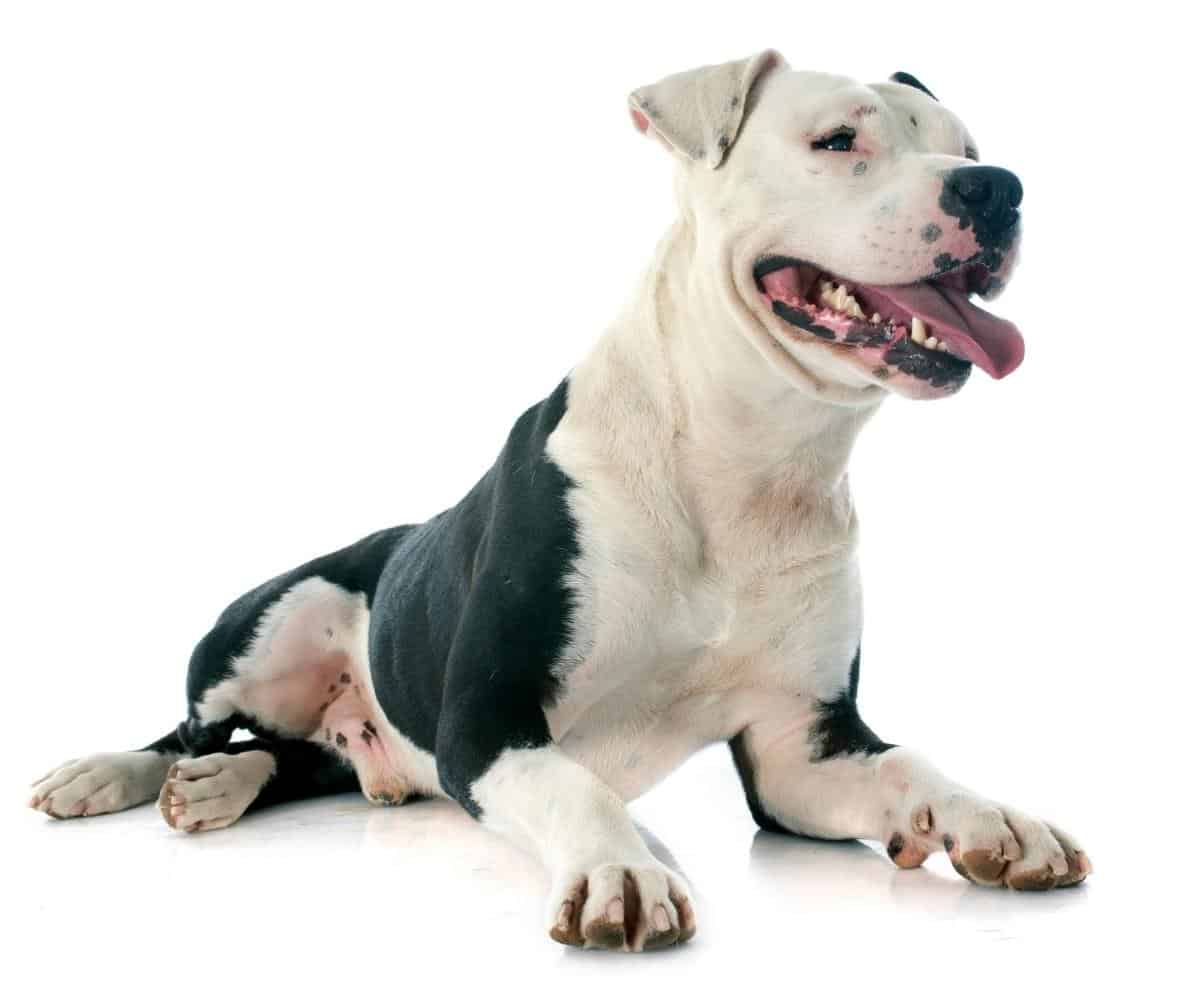In the world of canine breeds, few have stirred as much debate and emotion as the Pitbull. Often portrayed in media as aggressive and dangerous, Pitbulls have faced their share of controversy and stigma. But is this reputation deserved? Are Pitbulls bad dogs, or are they simply misunderstood?
Pitbulls may be perceived as ‘bad’ due to traits like their muscular build and powerful jaws, which can be intimidating. Their territorial nature, high energy levels, and strong prey drive, if not properly managed, can lead to aggressive or hyperactive behavior.
In this blog, we dive into the Pitbull debate, dissecting myths and stereotypes to uncover their true nature.
We’ll explore their history, behavior, and how human perceptions shape their lives. Join us as we challenge preconceived ideas and seek the truth. Are Pitbulls the menacing dogs often portrayed in media?
Let’s discover together.

Are Pitbulls Bad Dogs?
There is no “good” or “bad” breed, but some dogs can be a bad fit for your household or lifestyle.
Additionally, their protective instincts and potential lack of training can contribute to negative perceptions.
However, these traits are not unique to Pitbulls, and with responsible ownership and proper socialization, they can be as gentle and friendly as any other dog breed.
Reported Incidents Involving Pitbulls
You might have heard the saying, “there are no bad dogs, only bad trainers.” It is used almost exclusively in the context of Pitbulls because of the number of “reported incidents” in which they bite someone.
However, you’ll notice I emphasized “reported incidents” due to the often misidentification of the breed, as reported in various studies.
For example, this study on identifying Pitbull-type dogs by shelter staff found many inconsistencies and that “Pitbull-type” dogs were incorrectly identified 60% of the time.
Also, a study that analyzed ten years of dog bite-related fatalities with breed-based data found that media reports are a poor source for breed information, as over 40% of discrepancies between the breed reported in the media and the subsequent breed identification by animal control.
This same study also concluded that the leading cause of the fatalities was irresponsible ownership and not a particular breed.
So, the question is, why aren’t more people “bad trainers” of Labradors, Golden Retrievers, and Poodles?
Because they aren’t high-effort dogs (to varying degrees). It’s the same with German Shepherds, who are often wrongly portrayed as bad dogs. As a German Shepherd owner, I should know!
But you have to do things right.
You must be a good trainer to help a Pitbull learn to be social, avoid aggressive behavior, and remain secure in your absence.
If you’re on a mission to get a Pitbull, here are 7 Pitbull traits that could make them a bad fit for you.

1. Pitbulls Can Be Aggressive
If you’re interested in getting a Pitbull or want to persuade someone to adopt one, you might have already heard that Pitbulls can be aggressive. Pitbulls can indeed be aggressive, especially females in heat, but that goes for most breeds.
They can also display aggressive behavior whenever they feel threatened. Unfortunately, plenty of normal behavior can make a Pitbull feel threatened.
This includes removing their food bowl to add more food, going outside while leaving them behind, and even inviting a friend over.
Pitbulls have a bad reputation because they came into existence as dog fighters bred for maximum aggression.
While this increases the potential for aggression, it doesn’t make the dog aggressive by default. Pitbulls can be trained to be less aggressive but must be cautiously supervised.
Socializing your Pitbull is crucial because if he is not trained correctly, he can bite other pets and dogs even if he starts off friendly. Pitbulls don’t like surprises during playtime, so even getting startled can lead to a quick bite.
But those are the consequences of getting bitten by a Pitbull, not the inherent risks of having a Pitbull. As long as you ensure no one startles or threatens your dog and socialize him to understand normal behavior, he won’t bite for no reason.
Key points:
- Pitbulls are muscular and powerful, so you don’t want them to think of an average human as a possible threat.
- Pitbull puppies must be exposed to various people to keep them open-minded about new faces.
- Pitbulls’ have a high prey drive that needs reigning in with proper care and controlled exposure to other animals.
- It is easy to make a Pitbull asocial. However, you’ll have to deal with the negative consequences of having an asocial dog.
- A Pitbull that puts people on edge also feels bad about not receiving encouragement and attention.
Learn Why NOT To Get a Pitbull In This YouTube Video…
If your Pitbull is being treated or trained for aggression, ensure you keep changing almost everything about his routine so he does not get territorial.
2. Pitbulls Can Get Territorial
Does Pitbulls’ aggression mean you can’t invite friends over? In some cases, yes. If Pitbulls get too comfortable in a setting, they can become territorial about their habits and the objects and people surrounding them that they highly value.
Among the things that a Pitbull can get territorial about are the place where he feeds, the bowl in which he eats, the emptiness of the corner in which he sleeps, etc.
This can make inviting friends quite tricky if your Pitbull hasn’t been socialized very well.
Pitbulls are adorable and deserve a lot of love, but when they are not socialized properly, they must be loved from a distance. And if you have friends over, you must ensure they know this.
If you’re considering adopting a Pitbull, research shows that Pitbulls aren’t any more aggressive than other rescue dogs.
The study focused on shelter rescues, which is reasonable given that many rumors regarding Pitbulls are about their traumatizing past. It is pretty reliable, but it only proves that among shelter dogs, aggression levels are relatively similar.
It is also often stated that a Shih Tzu is more aggressive than a Pitbull. The problem is that a Shih Tzu isn’t as effective at causing damage in an aggressive state.
But if you want to feel at ease, you must go with your gut feeling regarding Pitbulls. If you feel anxious around a Pitbull, you’ll make him more nervous. And if you move too cautiously, you’ll make him more territorial.
Pro Tip! You can learn more about territorial Pitties and resource guarding in my article on Pitbull behavior problems.
There is no other way to keep a territorial Pitbull from becoming dangerous to anyone who wanders near him. When you start introducing and enforcing change, you claim the alpha status, making it unlikely that he will bite or snap at you.
Key points:
- Pitbulls can get territorial due to their immense loyalty to their owners. They may become even more territorial if they have been abused in the past and they’re afraid.
- A Pitbull won’t feel threatened once he realizes that strangers can enter his safe zone without endangering it.
- Overly territorial Pitbulls won’t allow you to go near them while eating. Food aggression is the most common reason why many dogs bite.

3. Pitbulls Can Be Destructive Chewers
Pitbulls, especially when anxious, can start chewing through furniture and almost anything they can find to bite. As a result, I often tell my friends that they shouldn’t get a Pitbull if they have no one at home when they leave for work.
Destructive chewing in Pitties can be due to:
- Lack of exercise
- Loneliness
- Boredom
- Poor obedience training
- Excessive stress
- Obsessive-compulsive behavior
Excessive chewing is most prominent in Pitbulls that are adopted and not bought from a breeder as a puppy.
Few Pitbulls from breeders don’t destroy things with aggressive chewing, while rescue dogs do because breeder-released dogs tend to be trained well as puppies.
Grown-up Pitbulls are much less likely to learn not to chew out random things. The chewing habit developed in a different home can intensify when the Pitbull’s environment changes.
A persistent myth regarding rescue Pitbulls is that they snap out of nowhere. And that has been proven wrong time and time again. Pitbulls that are traumatized show anxious behavior right away.
Pitbulls biting out of “nowhere” can be due to trauma or pent-up aggression. Human factors affect canine behavior, as shown in this horrendous case of a child mauled to death.
Investigators found that the dog had been stolen by a teenager and abused as he wanted to turn him into a fighting dog.
If a Pitbull seems more aggressive than anxious, he probably needs more exercise. And this applies to a new Pitbull as well as a shelter rescue.
It might seem like getting a Pitbull from a breeder is much safer. But that’s not the case if you genuinely don’t care appropriately for him. He needs to be exercised well, which can mean 1 to 2 hours of daily walking and other play activities.
Key points:
- All puppies chew when teething, and young pups will explore their new world with their mouths. However, excessive chewing becomes an issue when your Pitbull is an adult.
- You must understand why your Pittie is engaging in destructive chewing. Don’t rule out medical issues such as pain or illness. Once you know why he is exhibiting the behavior, you can begin steps to stop it.

4. Pitbulls Can Get Separation Anxiety
Anxiety and destructive chewing can merge to form a new problem: separation anxiety – an intense fear of being separated from their owners. A Pitbull will be a bad fit for you if you need to leave your dog for hours on end.
Pitties are prone to separation anxiety, and it’s a common reason why they end up in a shelter in the first place.
They bond intensely with their humans and can’t bear to be separated for long periods. They are super sensitive and needy creatures that need much love and kindness.
Symptoms of separation anxiety will manifest as:
- Drooling, pacing, showing stress as you’re about to leave
- Barking, howling, whining
- Chewing
- Digging or trying to escape
- Urinating or pooping
But there are ways to prevent it, especially if you get a puppy. Teach the pup to be left alone when you bring him home. Even 10 minutes in his crate a couple of times daily will set you up for success.
Dogs should not be left alone for more than 4 hours at a time, and puppies need to build up to this as you should only leave them for 1-hour maximum per month of age.
Shelter dogs suffering from this disorder need training using desensitization and counterconditioning techniques. Remember, they may have had a traumatic past, so you must exercise patience and consistency.
Key points:
- Pitbulls are naturally nervous about neglect and abandonment and can develop separation anxiety.
- Pitbulls are undesirable dogs for anxious people to own because they can reflect their owners’ moods.
- If you work long hours or can’t accommodate your Pitbulls’ separation anxiety with additional care, you should get a relatively stable and secure breed in your absence.
5. Pitbulls Are Prone to Medical Conditions
Pitbulls can have several medical conditions, including but not limited to:
- Hip dysplasia
- Knee complications
- Thyroid disease
- Degenerative myelopathy
Joint issues aren’t something you can train out of the dog because they are often related to its size due to its diverse breeding background.
If you’ve seen a picture of a fully grown Pitbull, you know this already. But you may not know that large dogs are prone to hip, joint, and bone problems.
If you’re choosing a Pitbull puppy, you must get your puppy from the right dog breeder. They must be reputable and show you the pup’s sire and dam before you pay up. Ask for specific tests to prove low to no risk of the above diseases.
However, despite your due diligence, there is no guarantee that your Pittie won’t develop any genetic conditions. Sadly, this is one of the disadvantages of Pitbulls.
I came unstuck in this department, as despite conducting thorough checks (hip scores), sadly, my dog has arthritis. Nonetheless, a comfortable dog bed can help significantly prevent these joint and mobility issues.
Key points:
- Only get a Pitbull if you can afford to make multiple visits to the vet or buy a good pet insurance policy.
- Pitbulls can develop medical conditions and require due diligence before buying – and patience and care after adoption.

6. Pitbulls Can Be Stubborn
One key thing that puts Pitbulls in the “bad” category is that they can sometimes be stubborn. However, their behavior is mainly a result of their living and training conditions.
Nonetheless, this strong, stubborn trait makes the Pittie a confident breed and occasionally tricky to handle. Breeds genetically predisposed to being headstrong, independent, and high-energy, like the Pitbull, are renowned for the stubborn trait.
Remember, the breed was initially bred to bait bulls. It’s no wonder they needed to show a high degree of confidence. Despite their loyalty and desire to please, their stubborn trait often shines through.
Pitties may also show stubbornness by rejecting your dominance. While many will imprint on you and follow you around as pups, you can quickly lose status if you’re not assertive and fail to anchor commands.
Key points:
- Pitbulls are well suited to assertive owners. There can be no fussy putting around with this breed, so if you have a “live and let live” attitude toward dog ownership, you should choose a more passive breed.
- Pitbulls can test your authority; you must enforce strict boundaries patiently. If you have that kind of capacity, then you will be well suited to the breed.
7. Rescue Pitbulls Are Harder To Train as Adults
This might sound cruel, but it is true. You should not get an adult Pitbull from a shelter if you can’t trust yourself to be the perfect dog trainer.
While some people are against buying puppies to discourage unethical breeding practices, getting a Pitbull from a shelter entails higher risk. The last thing you want is for the dog to end up back in the shelter or be euthanized.
Most breeds take longer to learn as adults, but Pitbulls can remain unpredictable until they know how to socialize with other dogs and humans.
A tiny percentage of Pitbulls are responsible for the hostile media that paints all Pitbulls as bad. But most of that news comes from traumatized and abused Pitbulls.
If your rescued Pittie was mistreated, she may be confused and need time to figure things out. Nonetheless, you cannot let the dog be the alpha.
Like any other breed, Pitbulls can develop behavior problems if abused, mishandled, or unsocialized, resulting in unwanted aggression.

If you rescue a Pitbull, ensure he’s still a puppy so there is time to train and socialize him. Remember that socialization should start immediately.
You can get away with slacking on the social exposure front if your dog belongs to a relatively tame breed.
Docile breeds can afford to learn late. But since Pitbull bites can be lethal, those raising puppies must ensure their dogs are friendly with everyone around them.
It really is possible for a Pitbull to be amiable, but this has to happen in the raising and training stage.
You don’t want to “tame” a “wild” Pitbull. You need to raise him properly. This brings us to the question of social IQ. How hard or easy is it to socialize a Pitbull?
Pitbulls are very easy to socialize early on. Because they don’t look intimidating as puppies, people gravitate toward them.
This positive social exposure can ingrain in the Pitbull that he is loved and that humans are friends. This means he will think twice before snapping at random strangers in the future.
Remember, Pitbulls aren’t inherently dangerous. They are intrinsically more prone to being stereotyped, reflecting how they are treated.
The way humans look at a specific Pitbull reflects on his psyche. If everyone’s on edge around a Pitbull, it is easy to see why he would be cautious.
This can make training a grown Pitbull harder than training other adult dogs. But as puppies, they’re very trainable and highly intelligent.
Key points:
- Only get an adult Pitbull from a shelter if you are a confident trainer and individual. Owners should be assertive, calm, and patient and have lots of time to spend with the dog.
- Don’t underestimate the importance of ongoing socialization and training. Pitties are intelligent dogs and may try to “play you” if you show any signs of weakness.
- Discipline your dog using positive reinforcement training and never use aversive methods such as physical force or yelling. Studies have shown that using aversive training methods can compromise the physical and mental health of dogs and even make a dog more aggressive.
Should You Get a Pitbull?
Most of this article assumes a worst-case scenario just to drive home that Pitbulls can be a bad fit for many people. But you can safely get a Pitbull if you are willing to be a responsible owner/trainer.
You should get a Pitbull if:
- You can get one as a puppy and socialize him well
- You can feed and exercise the dog
- You’re willing to be patient and strict where required
- You are strong-willed and confident
Pitbulls are very intimidating dogs because of their reputation and breeding history. But at the end of the day, they are lovable and affectionate dogs to many owners.
And the quicker they assimilate into a family and the better they are treated, the better they get. But if the trainer is bad or inexperienced, the Pitbull will also be bad.
FAQs
Are there any specific laws or restrictions for owning a Pitbull?
Many cities and municipalities have breed-specific laws (BSL) restricting or banning Pitbull ownership.
You’ll need to research your local regulations before getting a Pitbull. Some places have mandatory sterilization, liability insurance, or fencing requirements for owners.
Do Pitbull attacks occur more frequently compared to other breeds?
While pitbulls are sometimes stereotyped as more aggressive, studies on dog bite statistics have found no conclusive evidence that pitbull attacks occur more frequently than other breeds.
The data shows large, strong breeds like Pitbulls often do more damage in attacks due to their size but are no more likely to bite.
Are Pitbulls more prone to biting than other breeds?
There is no definitive proof that Pitbulls are inherently more prone to biting than other breeds either. Some research has found their jaw structure no more likely to cause injury than other molosser-type dogs. With proper training and socialization, any dog’s risk of biting can be minimized.
Can Pitbulls be trained to be well-behaved?
Like any breed, early positive reinforcement training and ongoing socialization are key to helping them become polite, obedient family pets. With an owner committed to their training needs, Pitbulls can learn good manners and behaviors just as successfully as other breeds.





